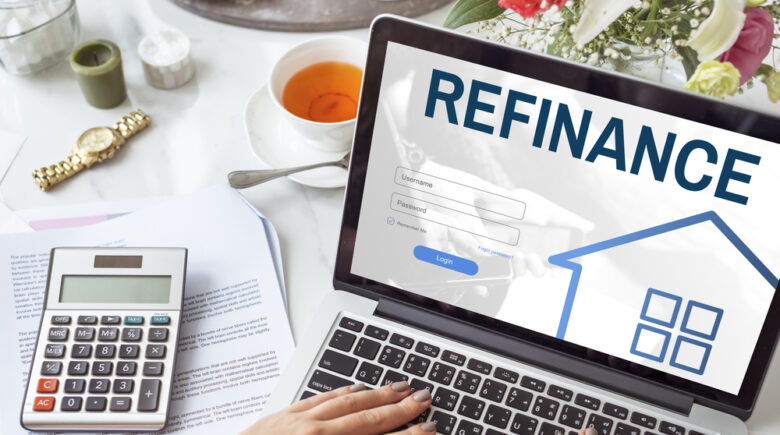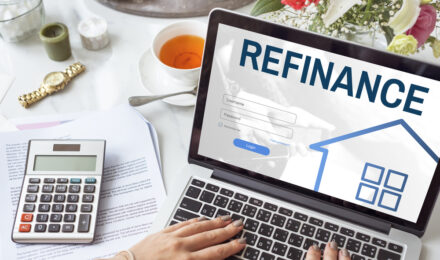Homeowners often hear that refinancing their mortgage could save them money or improve their loan terms—but what does “refinance” really mean? This guide breaks it down so you can decide whether refinancing makes sense for your financial situation.
What Is a Refinance?
Refinancing means replacing your existing loan with a new one that has different terms. Most commonly, people refinance their mortgage loans, but refinancing can also apply to auto loans or student loans.
Why Do People Refinance Their Mortgages?
1. To Lower the Interest Rate
One of the most common reasons to refinance is to secure a lower interest rate. If mortgage rates have dropped since you took out your original loan—or if your credit score has improved—you may qualify for a lower rate. This can significantly reduce your monthly payments and save you thousands over the life of the loan.
2. To Change the Loan Term
Refinancing also allows you to adjust how long you’ll take to pay off your loan:
- Shorten the term (e.g., from 30 years to 15 years): You’ll pay off your mortgage faster and save on total interest, though your monthly payment will be higher.
- Extend the term (e.g., from 15 years to 30 years): Your monthly payments will decrease, which can be helpful if your income has dropped, but you’ll pay more in interest over time.
3. To Access Home Equity (Cash-Out Refinance)
If your home has built up equity, a cash-out refinance lets you borrow against it. The new mortgage replaces your old one, and you receive the difference in cash. Homeowners often use this money to pay off credit cards, consolidate debt, or cover major expenses like home renovations.
Keep in mind that a cash-out refinance increases your loan balance—you’ll owe more than before—so it’s important to borrow responsibly.
4. To Switch from an Adjustable to a Fixed Rate
Adjustable-rate mortgages (ARMs) start with low interest rates that can fluctuate over time. When rates rise, so do your monthly payments. Many homeowners refinance from an ARM to a fixed-rate mortgage for stability and predictable payments.
How the Refinancing Process Works
Refinancing a mortgage is similar to applying for your first loan:
- Apply with a lender. They’ll run a credit check, which may temporarily lower your score.
- Submit financial documents such as pay stubs, tax returns, and bank statements.
- Get an appraisal. The lender will assess your home’s current value—expect to pay around $200.
- Underwriting. The lender reviews your information, a process that typically takes 30–45 days.
Potential Drawbacks of Refinancing
Refinancing isn’t always the right choice. Consider these possible downsides:
- Little remaining balance: If you’re close to paying off your mortgage, refinancing may not be worth the costs.
- Higher property taxes: Using a cash-out refinance for home improvements could increase your home’s value—and your property taxes.
- Reduced equity: Taking cash out lowers your ownership stake in the property.
- Closing costs: Expect to pay between 2% and 6% of your loan amount in fees. It’s important to calculate your break-even point to determine whether the savings outweigh the costs.
Before You Refinance
Refinancing can be a smart financial move, but it’s not a decision to rush. Before applying:
- Review your credit score. A minimum of 620 is typically required, but higher scores earn better rates.
- Evaluate your equity. The more equity you have, the lower your risk to lenders—and the better your terms.
- Clarify your goals. Make sure you’re refinancing for a clear reason, such as lowering payments, shortening your term, or accessing funds strategically.
Homeowners often hear that refinancing their mortgage could save them money or improve their loan terms—but what does “refinance” really mean? This guide breaks it down so you can decide whether refinancing makes sense for your financial situation.
What Is a Refinance?
Refinancing means replacing your existing loan with a new one that has different terms. Most commonly, people refinance their mortgage loans, but refinancing can also apply to auto loans or student loans.
Why Do People Refinance Their Mortgages?
1. To Lower the Interest Rate
One of the most common reasons to refinance is to secure a lower interest rate. If mortgage rates have dropped since you took out your original loan—or if your credit score has improved—you may qualify for a lower rate. This can significantly reduce your monthly payments and save you thousands over the life of the loan.
2. To Change the Loan Term
Refinancing also allows you to adjust how long you’ll take to pay off your loan:
- Shorten the term (e.g., from 30 years to 15 years): You’ll pay off your mortgage faster and save on total interest, though your monthly payment will be higher.
- Extend the term (e.g., from 15 years to 30 years): Your monthly payments will decrease, which can be helpful if your income has dropped, but you’ll pay more in interest over time.
3. To Access Home Equity (Cash-Out Refinance)
If your home has built up equity, a cash-out refinance lets you borrow against it. The new mortgage replaces your old one, and you receive the difference in cash. Homeowners often use this money to pay off credit cards, consolidate debt, or cover major expenses like home renovations.
Keep in mind that a cash-out refinance increases your loan balance—you’ll owe more than before—so it’s important to borrow responsibly.
4. To Switch from an Adjustable to a Fixed Rate
Adjustable-rate mortgages (ARMs) start with low interest rates that can fluctuate over time. When rates rise, so do your monthly payments. Many homeowners refinance from an ARM to a fixed-rate mortgage for stability and predictable payments.
How the Refinancing Process Works
Refinancing a mortgage is similar to applying for your first loan:
- Apply with a lender. They’ll run a credit check, which may temporarily lower your score.
- Submit financial documents such as pay stubs, tax returns, and bank statements.
- Get an appraisal. The lender will assess your home’s current value—expect to pay around $200.
- Underwriting. The lender reviews your information, a process that typically takes 30–45 days.
Potential Drawbacks of Refinancing
Refinancing isn’t always the right choice. Consider these possible downsides:
- Little remaining balance: If you’re close to paying off your mortgage, refinancing may not be worth the costs.
- Higher property taxes: Using a cash-out refinance for home improvements could increase your home’s value—and your property taxes.
- Reduced equity: Taking cash out lowers your ownership stake in the property.
- Closing costs: Expect to pay between 2% and 6% of your loan amount in fees. It’s important to calculate your break-even point to determine whether the savings outweigh the costs.
Before You Refinance
Refinancing can be a smart financial move, but it’s not a decision to rush. Before applying:
- Review your credit score. A minimum of 620 is typically required, but higher scores earn better rates.
- Evaluate your equity. The more equity you have, the lower your risk to lenders—and the better your terms.
- Clarify your goals. Make sure you’re refinancing for a clear reason, such as lowering payments, shortening your term, or accessing funds strategically.




